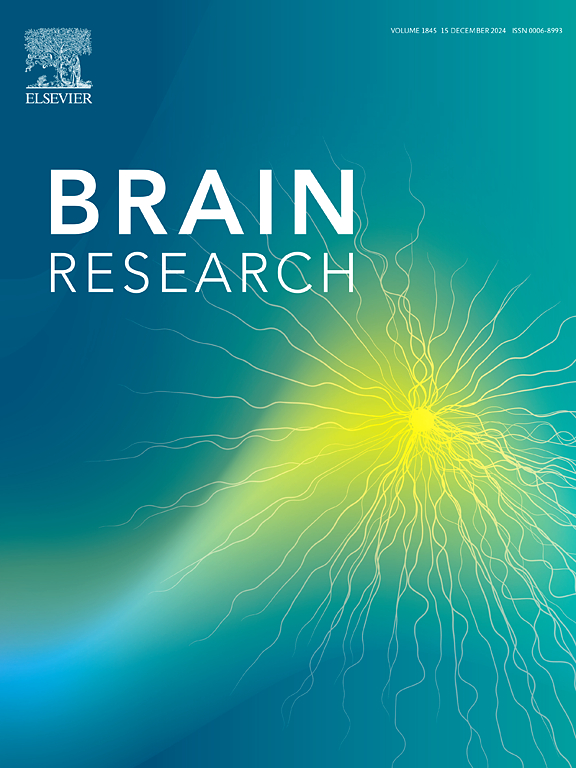Effects of hyperglycemia on neuronal network function in an in vitro model of the ischemic penumbra
IF 2.6
4区 医学
Q3 NEUROSCIENCES
引用次数: 0
Abstract
Introduction
Hyperglycemia is common in acute ischemic stroke, and associated with unfavorable outcome. However, the optimal glucose level is not known and cellular effects of hyperglycemia under hypoxia are largely unclear. We assessed how the extracellular glucose concentration affects cultured neuronal networks under experimental in vitro conditions, to provide a starting point for assessment of mechanisms at the neuronal network and cellular levels.
Methods
We used in vitro cultured rat neuronal networks on micro-electrode arrays (MEAs) and glass coverslips. Twenty-four hours of controlled hypoxia was induced. We measured neuronal network activity during baseline (normoxia, 6 h), 24 h of hypoxia, and 6 h after reoxygenation, defined as the summed number of action potentials in 1 h bins. Apoptosis was determined intermittently with caspase 3/7 staining and microscopy. We compared groups of networks under glucose concentrations of 5.0 mmol/L, 7.0 mmol/L, 9.0 mmol/L, and 12.0 mmol/L.
Results
Overall, during hypoxia, a gradual decrease in neuronal network activity and increase in apoptosis was found. There were faster decrease in activity (p < 0.01) and more apoptosis after 24 h of hypoxia under glucose levels of 12 mmol/L in a single-well MEA set-up (p < 0.05), and more apoptosis in glass coverslips with glucose levels of 12.0 mmol/L in comparison with 5 mmol/L (p = 0.03). These differences were not observed in multi-well MEAs, in which effects of hypoxia were much smaller than in single-well MEAs.
Conclusion
Hyperglycemia was associated with a more rapid decrease of neuronal network activity during and more apoptosis after 24 h of hypoxia in cultured neuronal networks. Loss of neuronal activity and apoptosis probably play a role in poorer outcomes of stroke patients under hyperglycemia. Our model provides a starting point for further assessment of pathomechanisms.
高血糖对缺血半暗带离体模型神经元网络功能的影响。
高血糖在急性缺血性脑卒中中很常见,并与不良预后相关。然而,最佳葡萄糖水平尚不清楚,缺氧下高血糖对细胞的影响在很大程度上尚不清楚。我们在体外实验条件下评估了细胞外葡萄糖浓度如何影响培养的神经网络,为神经网络和细胞水平的机制评估提供了一个起点。方法:利用体外培养的大鼠神经网络在微电极阵列(MEAs)和玻璃盖上进行培养。诱导24小时控制性缺氧。我们测量了基线(正常缺氧6 h)、缺氧24 h和复氧后6 h时的神经网络活动,定义为1 h箱中动作电位的总和。caspase 3/7染色及镜检间断检测细胞凋亡。我们比较了葡萄糖浓度为5.0 mmol/L、7.0 mmol/L、9.0 mmol/L和12.0 mmol/L的各组网络。结果:总体而言,缺氧时神经元网络活性逐渐降低,细胞凋亡增加。结论:高血糖与培养的神经元网络缺氧24 h时神经元网络活性下降更快、凋亡更多有关。神经元活性丧失和细胞凋亡可能在高血糖卒中患者预后较差中起作用。我们的模型为进一步评估病理机制提供了一个起点。
本文章由计算机程序翻译,如有差异,请以英文原文为准。
求助全文
约1分钟内获得全文
求助全文
来源期刊

Brain Research
医学-神经科学
CiteScore
5.90
自引率
3.40%
发文量
268
审稿时长
47 days
期刊介绍:
An international multidisciplinary journal devoted to fundamental research in the brain sciences.
Brain Research publishes papers reporting interdisciplinary investigations of nervous system structure and function that are of general interest to the international community of neuroscientists. As is evident from the journals name, its scope is broad, ranging from cellular and molecular studies through systems neuroscience, cognition and disease. Invited reviews are also published; suggestions for and inquiries about potential reviews are welcomed.
With the appearance of the final issue of the 2011 subscription, Vol. 67/1-2 (24 June 2011), Brain Research Reviews has ceased publication as a distinct journal separate from Brain Research. Review articles accepted for Brain Research are now published in that journal.
 求助内容:
求助内容: 应助结果提醒方式:
应助结果提醒方式:


